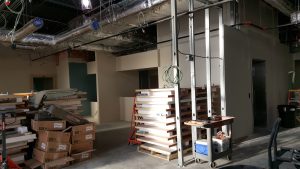HVAC – Protection During Construction
Posted by Matt Milos on Jun 13th 2019
On many projects contractors try to get the permanent HVAC system up and running as soon as possible, regardless of the state of interior finishes.
On the surface this seems like a solid strategy. The permanent system needs to be fully operational to receive occupancy approval. Another big incentive is the opportunity to shift the cost of climate control over to the owner.

HVAC systems aren't built for construction conditions.
To reference our previous post, permanent systems are designed for a tight structure.
They simply cannot keep up with the demands of construction conditions and heavy traffic. Additionally, running the system during construction makes it circulate dust, dirt, and other debris. This is harmful not only to the system but also to the occupants of the structure down the line. In fact, the practice is often so damaging that some industry professionals actively campaign against it. Some architects do not allow it at all and organizations such as Sheet Metal and Air Conditioning Contractors' National Association publish articles condemning the practice. (Here is a link if you are interested)
If, however, you do choose to use the permanent system the manufacturer and HVAC contractor will want to protect it. To combat potential problems you must put a whole host of protections in place. Before turning over the building contractors need to regularly change filters and possibly deep-clean the duct-work—at no small cost, mind you. Some projects even assign someone whose sole responsibility is to change filters each day.

Maintaining an HVAC system during construction can get costly fast.
In cases like these temporary filtration makes a lot of sense.
Even if your project does not require temporary HEPA filtration, air scrubbers can dramatically reduce overall cost. Simply placing units near cold air returns and work areas seeing excessive particulate production protects the permanent HVAC system from excessive wear and tear.
Every situation and building is different. Ultimately only you can decide the best course of action. Do you operate the permanent system, investing time and money in changing filters and cleaning ducts? Or do you rent temporary climate control for less maintenance? For many the ideal balance is to use the system but add a little temporary equipment to protect it. The final decision is up to you, but we're happy to help you put together the perfect plan.



